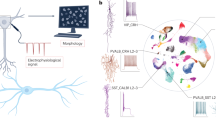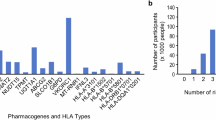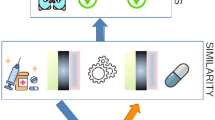Abstract
The pharmaceutical industry and its global regulators have routinely used frequentist statistical methods, such as null hypothesis significance testing and p values, for evaluation and approval of new treatments. The clinical drug development process, however, with its accumulation of data over time, can be well suited for the use of Bayesian statistical approaches that explicitly incorporate existing data into clinical trial design, analysis and decision-making. Such approaches, if used appropriately, have the potential to substantially reduce the time and cost of bringing innovative medicines to patients, as well as to reduce the exposure of patients in clinical trials to ineffective or unsafe treatment regimens. Nevertheless, despite advances in Bayesian methodology, the availability of the necessary computational power and growing amounts of relevant existing data that could be used, Bayesian methods remain underused in the clinical development and regulatory review of new therapies. Here, we highlight the value of Bayesian methods in drug development, discuss barriers to their application and recommend approaches to address them. Our aim is to engage stakeholders in the process of considering when the use of existing data is appropriate and how Bayesian methods can be implemented more routinely as an effective tool for doing so.
This is a preview of subscription content, access via your institution
Access options
Access Nature and 54 other Nature Portfolio journals
Get Nature+, our best-value online-access subscription
$32.99 / 30 days
cancel any time
Subscribe to this journal
Receive 12 print issues and online access
$259.00 per year
only $21.58 per issue
Buy this article
- Purchase on SpringerLink
- Instant access to full article PDF
Prices may be subject to local taxes which are calculated during checkout




Similar content being viewed by others
References
Drug Amendments Act of 1962, Public Law 87–781, 76 STAT 780. https://www.govinfo.gov/content/pkg/STATUTE-76/pdf/STATUTE-76-Pg780.pdf (1962).
US FDA. Demonstrating Substantial Evidence of Effectiveness for Human Drug and Biological Products Guidance for Industry. https://www.fda.gov/media/133660/download (2019).
Berry, D. A. Bayesian clinical trials. Nat. Rev. Drug. Discov. 5, 27–36 (2006).
US FDA. Guidance for Industry and FDA Staff Guidance for the Use of Bayesian Statistics in Medical Device Clinical Trials. https://www.fda.gov/media/71512/download (2010).
Kruschke, J. K. & Liddell, T. M. Bayesian data analysis for newcomers. Psychon. Bull. Rev. 25, 155–177 (2017).
Ruberg, S. J. Détente: a practical understanding of p values and Bayesian posterior probabilities. Clin. Pharm. Ther. 109, 1489–1498 (2020).
Laptook, A. R. et al. Effect of therapeutic hypothermia initiated after 6 hours of age on death or disability among newborns with hypoxic-ischemic encephalopathy. JAMA 318, 1550 (2017).
US FDA. Development and Licensure of Vaccines to Prevent COVID-19: Guidance for Industry. https://www.fda.gov/media/139638/download (2020).
Polack, F. P. et al. Safety and efficacy of the BNT162B2 MRNA COVID-19 vaccine. N. Engl. J. Med. 383, 2603–2615 (2020).
Irony, T. & Huang, L. in Bayesian Applications in Pharmaceutical Development (eds Lakshminarayanan, M. & Natanegara, F.) 307–327 (Chapman and Hall/CRC 2019).
Ionan, A. C. et al. Bayesian methods in human drug and biological products development in CDER and CBER. Ther. Innov. Regul. Sci. https://doi.org/10.1007/s43441-022-00483-0 (2022).
Götte, H., Schüler, A., Kirchner, M. & Kieser, M. Sample size planning for phase II trials based on success probabilities for phase III. Pharm. Stat. 14, 515–524 (2015).
Ruberg, S. J. et al. Inference and decision making for 21st-century drug development and approval. Am. Stat. 73, 319–327 (2019).
Harhay, M. O. et al. A Bayesian interpretation of a pediatric cardiac arrest trial (THAPCA-OH). NEJM Evid. https://doi.org/10.1056/EVIDoa2200196 (2022).
Moler, F. W. et al. Therapeutic hypothermia after out-of-hospital cardiac arrest in children. N. Engl. J. Med. 372, 1898–1908 (2015).
Viele, K. et al. Use of historical control data for assessing treatment effects in clinical trials. Pharm. Stat. 13, 41–54 (2013).
Smith, C. L. et al. Leveraging historical data into oncology development programs: two case studies of phase 2 Bayesian augmented control trial designs. Pharm. Stat. 19, 276–290 (2020).
Dron, L., Golchi, S., Hsu, G. & Thorlund, K. Minimizing control group allocation in randomized trials using dynamic borrowing of external control data – an application to second line therapy for non-small cell lung cancer. Contemp. Clin. Trials Commun. 16, 100446 (2019).
McGlothlin, A. E. & Viele, K. Bayesian hierarchical models. JAMA 320, 2365–2366 (2018).
Kruschke, J. K. & Vanpaemel, W. Bayesian estimation in hierarchical models. Oxf. Handb. Online https://doi.org/10.1093/oxfordhb/9780199957996.013.13 (2015).
Fleming, T. R. Clinical trials: discerning hype from substance. Ann. Intern. Med. 153, 400–406 (2010).
Kim, E. S. et al. The BATTLE trial: personalizing therapy for lung cancer. Cancer Discov. 1, 44–53 (2011).
Zhou, X., Liu, S., Kim, E. S., Herbst, R. S. & Lee, J. J. Bayesian adaptive design for targeted therapy development in lung cancer — a step toward personalized medicine. Clin. Trials 5, 181–193 (2008).
Barry, W. T., Perou, C. M., Marcom, P. K., Carey, L. A. & Ibrahim, J. G. The use of Bayesian hierarchical models for adaptive randomization in biomarker-driven phase II studies. J. Biopharm. Stat. 25, 66–88 (2015).
Mehrotra, D. V. & Heyse, J. F. Use of the false discovery rate for evaluating clinical safety data. Stat. Methods Med. Res. 13, 227–238 (2004).
Berry, S. M. & Berry, D. A. Accounting for multiplicities in assessing drug safety: a three-level hierarchical mixture model. Biometrics 60, 418–426 (2004).
Wadsworth, I., Hampson, L. V. & Jaki, T. Extrapolation of efficacy and other data to support the development of new medicines for children: a systematic review of methods. Stat. Methods Med. Res. 27, 398–413 (2016).
European Medicines Agency. Reflection Paper on the Use of Extrapolation in the Development of Medicines for Paediatrics. https://www.ema.europa.eu/en/documents/scientific-guideline/adopted-reflection-paper-use-extrapolation-development-medicines-paediatrics-revision-1_en.pdf (2018).
Center for Devices and Radiological Health. Leveraging existing clinical data for extrapolation to pediatric uses of medical devices. Guidance for industry and Food and Drug Administration staff. https://www.fda.gov/media/91889/download (2016).
Gamalo-Siebers, M. et al. Statistical modeling for Bayesian extrapolation of adult clinical trial information in pediatric drug evaluation. Pharm. Stat. 16, 232–249 (2017).
Collins, J. F. In Clinical Trials Design in Operative and Non Operative Invasive Procedures (eds Itani, K. & Reda, D.) 189–196 (Springer, 2017).
Woodcock, J. & LaVange, L. M. Master protocols to study multiple therapies, multiple diseases, or both. N. Engl. J. Med. 377, 62–70 (2017).
Barker, A. D. et al. I-SPY 2: an adaptive breast cancer trial design in the setting of neoadjuvant chemotherapy. Clin. Pharm. Ther. 86, 97–100 (2009).
Nauck, M. et al. Efficacy and safety of dulaglutide versus sitagliptin after 52 weeks in type 2 diabetes in a randomized controlled trial (AWARD-5). Diabetes Care 37, 2149–2158 (2014).
Micheletti, R. G. et al. Protocol for a randomized multicenter study for isolated skin vasculitis (Aramis) comparing the efficacy of three drugs: azathioprine, colchicine, and dapsone. Trials 21, 362 (2020).
Wei, B., Braun, T. M., Tamura, R. N. & Kidwell, K. M. A Bayesian analysis of small n sequential multiple assignment randomized trials (snSMARTs). Stat. Med. 37, 3723–3732 (2018).
Fang, F., Hochstedler, K. A., Tamura, R. N., Braun, T. M. & Kidwell, K. M. A Bayesian analysis of small n, sequential, multiple assignment, randomized trial designs for the registration of a drug in rare diseases. Stat. Med. 40, 963–977 (2021).
Pallmann, P. et al. Adaptive designs in clinical trials: why use them, and how to run and report them. BMC Med. 16, 29 (2018).
Bhatt, D. L. & Mehta, C. Adaptive designs for clinical trials. N. Engl. J. Med. 375, 65–74 (2016).
US FDA. Adaptive Design Clinical Trials for Drugs and Biologics Guidance for Industry. https://www.fda.gov/regulatory-information/search-fda-guidance-documents/adaptive-design-clinical-trials-drugs-and-biologics-guidance-industry (2019).
European Medicines Agency. Reflection Paper on Methodological Issues in Confirmatory Clinical Trials Planned With an Adaptive Design. https://www.ema.europa.eu/en/documents/scientific-guideline/reflection-paper-methodological-issues-confirmatory-clinical-trials-planned-adaptive-design_en.pdf (2007).
The Medical Outreach Subteam of the Drug Information Association Bayesian Scientific Working Group. et al. Why are not there more Bayesian clinical trials? Perceived barriers and educational preferences among medical researchers involved in drug development. Ther. Innov. Regul. Sci. https://doi.org/10.1007/s43441-021-00357-x (2022).
Keene, O. N. et al. What matters most? Different stakeholder perspectives on estimands for an invented case study in COPD. Pharm. Stat. 19, 370–387 (2020).
Chuang-Stein, C. & Kirby, S. The shrinking or disappearing observed treatment effect. Pharm. Stat. 13, 277–280 (2014).
Erdmann, S., Kirchner, M., Götte, H. & Kieser, M. Optimal designs for phase II/III drug development programs including methods for discounting of phase II results. BMC Med. Res. Methodol. 20, 253 (2020).
Mintun, M. A. et al. Donanemab in early Alzheimer’s disease. N. Engl. J. Med. 384, 1691–1704 (2021).
Swanson, C. J. et al. A randomized, double-blind, phase 2b proof-of-concept clinical trial in early Alzheimer’s disease with lecanemab, an anti-Aβ protofibril antibody. Alzheimers Res. Ther. 13, 80 (2021).
van Dyck, C. H. et al. Lecanemab in early Alzheimer’s disease. N. Engl. J. Med. 388, 9–21 (2023).
European Medicines Agency. ICH E9 Statistical Principles for Clinical Trials. https://www.ema.europa.eu/en/ich-e9-statistical-principles-clinical-trials (2020).
Center for Drug Evaluation and Research. Non-inferiority Clinical Trials. https://www.fda.gov/regulatory-information/search-fda-guidance-documents/non-inferiority-clinical-trials (2016).
European Medicines Agency. Guideline on the Choice of the Non-Inferiority Margin. https://www.ema.europa.eu/en/documents/scientific-guideline/guideline-choice-non-inferiority-margin_en.pdf (2005).
Lee, J. J. & Yin, G. Principles and reporting of Bayesian trials. J. Thorac. Oncol. 16, 30–36 (2021).
Maron, D. J. et al. Initial invasive or conservative strategy for stable coronary disease. N. Engl. J. Med. 382, 1395–1407 (2020).
Wacholder, S., Chanock, S., Garcia-Closas, M., El ghormli, L. & Rothman, N. Assessing the probability that a positive report is false: an approach for molecular epidemiology studies. J. Natl Cancer Inst. 96, 434–442 (2004).
Lesaffre, E., Baio, G. & Boulanger, B. (eds) Bayesian Methods in Pharmaceutical Research (Chapman & Hall, 2020).
Food and Drug Administration. CFR - Code of Federal Regulations Title 21. https://www.accessdata.fda.gov/scripts/cdrh/cfdocs/cfcfr/cfrsearch.cfm?fr=314.105 (2022).
Janiaud, P., Irony, T., Russek-Cohen, E. & Goodman, S. N. US Food and Drug Administration reasoning in approval decisions when efficacy evidence is borderline, 2013–2018. Ann. Intern. Med. 174, 1603–1611 (2021).
Bayes, T. An essay towards solving a problem in the doctrine of chances. By the late Rev. Mr. Bayes, F.R.S. Communicated by Mr. Price, in a letter to John Canton, A.M.F.R.S. Philos. Trans. R. Soc. Lond. 53, 370–418 (1763).
McGrayne, S. B. The Theory that Would Not Die: How Bayes’ rule cracked the Enigma code, hunted down Russian submarines, and emerged triumphant from two centuries of controversy (Yale University Press, 2011).
Clayton, A. Bernoulli’s Fallacy: Statistical Illogic and the Crisis of Modern Science (Columbia University Press, 2021).
Berry, S. M. et al. Bayesian survival analysis with nonproportional hazards. J. Am. Stat. Assoc. 99, 36–44 (2004).
Acknowledgements
The authors graciously acknowledge the insightful comments of four reviewers and the editor that led to valuable refinements and enhancements to this manuscript.
Author information
Authors and Affiliations
Corresponding author
Ethics declarations
Competing interests
S.J.R. is a consultant to the Pharmaceutical Research and Manufacturers of America (PhRMA) and several pharmaceutical companies. F.B. is employed at Leuven University and at Sanofi, where he is a stockholder. Most of the work on this manuscript was completed while employed at Merck KGaA. R.H. is an independent consultant to the pharmaceutical industry. P.H. is a stockholder in Pfizer and Merck and works as an adviser to Blackstone, which invests in many pharmaceutical companies. T.I. is an employee of Janssen Pharmaceutical Companies of Johnson & Johnson and a stockholder. L.L. is an employee of the University of North Carolina, Chapel Hill and has an Intergovernmental Personnel Act (IPA) Assignment with the FDA. She is an expert statistical consultant with the Center for Drug Evaluation and Research. G.L. is employed by a startup health-care data company, N-Power Medicine, but performed work on this manuscript as an employee of Genentech. She is a Roche shareholder. J.M. is a Pfizer stockholder and is retired but performed most of his work on this manuscript while employed by PhRMA. R.M. is retired but performed most of his work on this manuscript while employed by PhRMA. He is a board director of KSQ corporation, a privately held biotech company.
Peer review
Peer review information
Nature Reviews Drug Discovery thanks Emmanuel Lesaffre, Philip Pallmann, Benjamin Saville and the other, anonymous, reviewer for their contribution to the peer review of this work.
Additional information
Publisher’s note Springer Nature remains neutral with regard to jurisdictional claims in published maps and institutional affiliations.
Related links
FDA Center for Drug Evaluation and Research. Complex Innovative Trial Design Meeting Program: https://www.fda.gov/drugs/development-resources/complex-innovative-trial-design-meeting-program
FDA Center for Drug Evaluation and Research. Impact Story: Using innovative statistical approaches to provide the most reliable treatment outcomes information to patients and clinicians: https://www.fda.gov/drugs/regulatory-science-action/impact-story-using-innovative-statistical-approaches-provide-most-reliable-treatment-outcomes
Rights and permissions
Springer Nature or its licensor (e.g. a society or other partner) holds exclusive rights to this article under a publishing agreement with the author(s) or other rightsholder(s); author self-archiving of the accepted manuscript version of this article is solely governed by the terms of such publishing agreement and applicable law.
About this article
Cite this article
Ruberg, S.J., Beckers, F., Hemmings, R. et al. Application of Bayesian approaches in drug development: starting a virtuous cycle. Nat Rev Drug Discov 22, 235–250 (2023). https://doi.org/10.1038/s41573-023-00638-0
Accepted:
Published:
Issue date:
DOI: https://doi.org/10.1038/s41573-023-00638-0
This article is cited by
-
Use of Bayesian techniques in clinical trials for rheumatoid arthritis and systemic sclerosis: a scoping review
BMC Rheumatology (2025)
-
Leptomeningeal metastatic disease: new frontiers and future directions
Nature Reviews Clinical Oncology (2025)
-
Adaptive Universal Principles for Real-world Observational Studies (AUPROS): an approach to designing real-world observational studies for clinical, epidemiologic, and precision oncology research
British Journal of Cancer (2025)
-
Statistical methods leveraging the hierarchical structure of adverse events for signal detection in clinical trials: a scoping review of the methodological literature
BMC Medical Research Methodology (2024)
-
Reply to ‘Bayesian approaches in drug development: continuing the virtuous cycle’
Nature Reviews Drug Discovery (2024)



